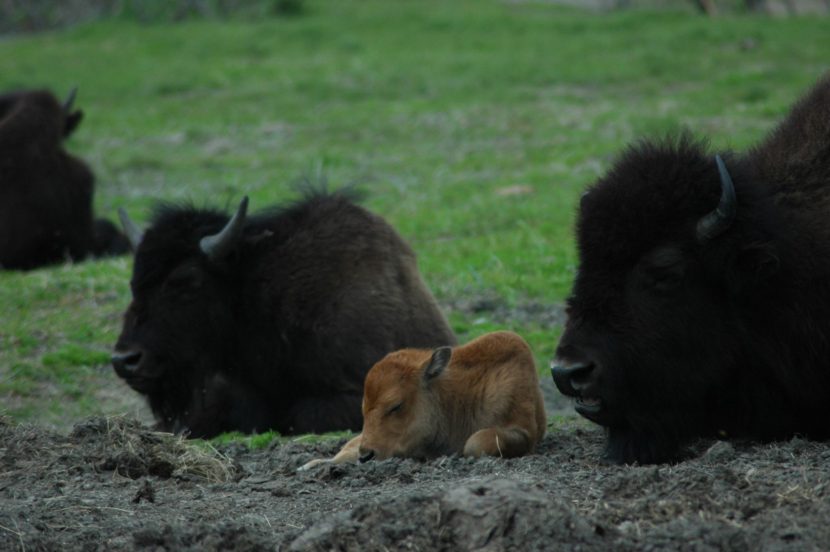
Wood bison, recently reintroduced by the Alaska Department of Fish and Game into western Alaska, have been begun to roam throughout the region and spotted near Bethel.
The first sighting of wood bison calves born in the wild could mean big changes in the ecosystem of western Alaska.
The sighting last week of the newborn animals comes after Fish and Game released about 130 wood bison in 2015, an effort Fish and Game biologist Tom Seaton said has been in the works for more than 25 years.
Since the reintroduction, the herd has had its ups and downs. Though 19 of the bison born in captivity died once released, “The bison are completely functioning as wild animals and being successful at it,” Seaton said.
The true test of how well the creatures can adapt is in the survival of the calves, Seaton said.
“Most of the animals out there now spent most of their life in captivity, and they’re doing a great job of being wild bison. But they’ll never be as good as these animals that were bred and born in the wild,” Seaton said.
The deaths of the 19 bison has not been the only challenge. The bison born in captivity sometimes have trouble being independent from humans.
“First it was kind of a thrill to see them,” said Chief Ivan Demientieff of Grayling, who came home one day to find six wood bison in his yard.
“I made jokes saying that I don’t need no grass cutter anymore,” Demientieff said.
But things changed when one bison began to cause trouble.
“It got to the point where it wouldn’t leave, and I had to chase it out of the yard. Then it started living in my shop,” Demientieff said.
Eventually authorities removed the bison. But Seaton said he’s not concerned about this behavior, because the next generation of bison will most likely be more afraid of humans and able to seek out food in the wilderness instead of people’s yards.
When people start hunting the wood bison, which Seaton said will happen when and if the herd more than doubles in size, that will be the final push into the wild to make the animals feel less domestic.
The opportunity for Alaska Natives to hunt the wood bison is a big selling point, said Seaton. He hopes the bison’s progression will resemble another animal that’s become a staple food in western Alaska.
“Moose didn’t occur in western Alaska until about a 100 years ago,” Seaton said.
The animals migrated from eastern Alaska in the early 1900s.
“But today moose are a big part of the culture and food supply of people in western Alaska,” Seaton said. “And if we look 100 years in the future, it’s possible that wood bison could also be a part of the culture and food supply of people in Alaska.”
